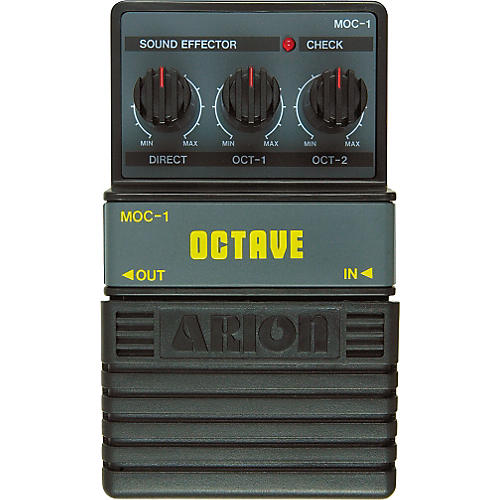

Complex stompboxes may have multiple footswitches, many knobs, additional switches or buttons that are operated with the fingers, and an alphanumeric LED display that indicates the status of the effect with short acronyms (e.g., DIST for "distortion"). For a chorus effect, for example, the knobs may control the depth and speed of the effect. Depending on the type of pedal, the potentiometers may control different parameters of the effect. A typical distortion or overdrive pedal's three potentiometers, for example, control the level or intensity of the distortion effect, the tone of the effected signal and the output level of the effected signal.

Typical simple stompboxes have a single footswitch, one to three potentiometers for controlling the effect, and a single LED that indicates if the effect is on. Pedals are often rectangle-shaped, but there are a range of other shapes (e.g., the circular Fuzz Face). Stompboxes are small plastic or metal chassis which usually lie on the floor or in a pedalboard to be operated by the user's feet. Whatever the form factor, effects units are part of a studio or musician's outboard gear. In the studio, an instrument or another sound source - possibly an auxiliary output of a mixer or a DAW - is patched into the effect. During a live performance, the effect is plugged into the electrical signal path of the instrument. An effects unit can consist of analog or digital electronics or a combination of the two. However, by the 21st century, with the advent of digital plugins and more powerful stompboxes for live usage, the need for rackmount effects units been reduced. Rackmount devices saw a heavy usage during the later 20th century, due to their advanced processing power and desirable tones. Stompboxes are used in both live performance and studio recording. When rackmounted effects are mounted in a roadcase, this also speeds up a musician's set-up and tear-down time, because all of the effects can be connected together inside the rack case.Įffects units are available in a variety of form factors. When a musician has multiple effects in a rack mounted road case, this case may be called an effects rack or rig. Ī musician bringing many pedals to a live show or recording session often mounts the pedals on a guitar pedalboard, to reduce set-up and tear-down time and, for pedalboards with lids, protect the pedals during transportation. Unprocessed audio coming into an effects unit is referred to as dry, while the processed audio output is referred to as wet. A pedal-style unit may be called a stomp box, stompbox, effects pedal or pedal. The abbreviation F/X or FX is sometimes used. Various type of guitar and bass effect pedals.Īn effects unit is also called an effect box, effects device, effects processor or simply an effect. While effects are most frequently used with electric or electronic instruments, they can be used with any audio source, such as acoustic instruments, drums, and vocals. Musicians, audio engineers and record producers use effects units during live performances or in the studio, typically with electric guitar, bass guitar, electronic keyboard or electric piano. They may also be built into guitar amplifiers, instruments (such as the Hammond B-3 organ), tabletop units designed for DJs and record producers, and rackmounts, and are widely used as audio plug-ins in such common formats as VST, AAX, and AU. Effects are often used as stompboxes, typically placed on the floor and controlled with footswitches. Some effects, particularly older ones such as Leslie speakers and spring reverbs, use mechanical components or vacuum tubes.

Most modern effects use solid-state electronics or digital signal processors. Signal chain order: tuner, compressor, octave generator, wah-wah pedal, overdrive, distortion, fuzz, EQ and tremolo.Īn effects unit or effects pedal is an electronic device that alters the sound of a musical instrument or other audio source through audio signal processing.Ĭommon effects include distortion/overdrive, often used with electric guitar in electric blues and rock music dynamic effects such as volume pedals and compressors, which affect loudness filters such as wah-wah pedals and graphic equalizers, which modify frequency ranges modulation effects, such as chorus, flangers and phasers pitch effects such as pitch shifters and time effects, such as reverb and delay, which create echoing sounds and emulate the sound of different spaces. A pedalboard allows a performer to create a ready-to-use chain of multiple pedals to achieve certain types of sounds.


 0 kommentar(er)
0 kommentar(er)
